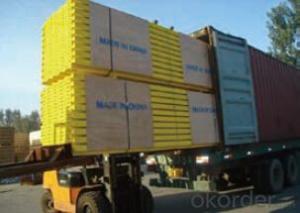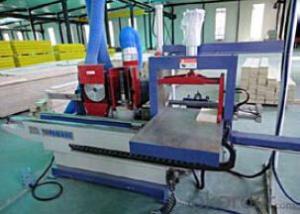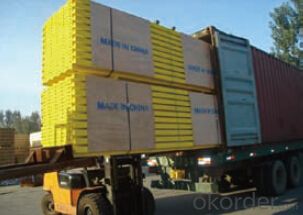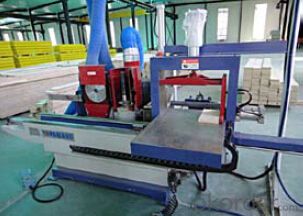Timber-beam H20 for formwork and scaffolding systems
- Loading Port:
- Tianjin
- Payment Terms:
- TT OR LC
- Min Order Qty:
- 50 m²
- Supply Capability:
- 1000 m²/month
OKorder Service Pledge
OKorder Financial Service
You Might Also Like
Characteristics:
◆ Standardized production lines.
Supply capability: 3000m/day, Lmax = 6600mm.
◆ Finger jointing of the flange and web, the strength of timber beam is highly improved.
Max. shearing force failure load:40KN
◆ Well treated to prevent from water penetration or erosion, so the service life maximally extended.
Normally, CNBM timber beam H20 can be used for 4 to 5 years, the exact using time would depend on maintenance & storage.
◆ Robust caps at the end of the girders protect against damages.
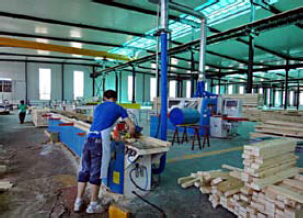
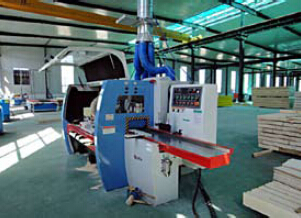
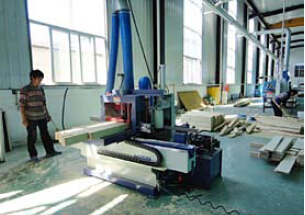
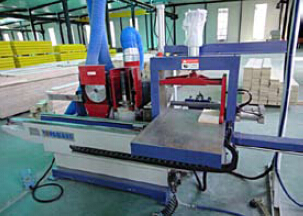
- Q: How is steel formwork supported during concrete pouring?
- Steel formwork is supported during concrete pouring by using props or scaffolding. These supports are strategically placed at regular intervals to provide stability and prevent any sagging or movement of the formwork. Additionally, adjustable bolts or wedges are used to ensure that the formwork remains level and in the desired position throughout the pouring process.
- Q: What types of concrete structures can be built using steel formwork?
- Steel formwork is a versatile construction tool that has the capability to build a variety of concrete structures. Some examples of common structures that can be created using steel formwork are: 1. Walls: Steel formwork can be utilized to construct both retaining walls and load-bearing walls. It provides the necessary support to hold the concrete in place until it sets and gains its strength. Steel formwork allows for the construction of walls with different shapes and sizes, such as straight, curved, or inclined walls. 2. Columns: For constructing columns of varying heights and diameters, steel formwork is the ideal choice. It offers a strong and stable framework to hold the concrete in place while it cures. Steel formwork can be easily adjusted to accommodate various column dimensions, making it suitable for both small and large-scale construction projects. 3. Beams and Slabs: Beams, which are horizontal structural members that support the structure above, and slabs, which form the floors or roofs of a building, can also be constructed using steel formwork. Steel formwork allows for the construction of beams and slabs with different shapes and sizes, including rectangular, circular, or even curved configurations. 4. Bridges and Tunnels: Bridges and tunnels commonly rely on steel formwork during construction. It enables the creation of complex structural elements with high precision and accuracy. Steel formwork systems are easily transportable and can be assembled on-site, making them an efficient choice for bridge and tunnel construction projects. 5. Staircases: Steel formwork can also be used to build staircases with various configurations, such as straight flights, spiral stairs, or helical stairs. It provides the necessary support to create the desired shape and geometry of the staircase. Steel formwork ensures the structural integrity of the staircase while the concrete sets and hardens. In summary, steel formwork is a flexible and durable solution for constructing a wide range of concrete structures. Its adaptability, strength, and ease of use make it an ideal choice for various construction projects, including residential buildings and large-scale infrastructure developments.
- Q: Can steel formwork be used in retail or commercial construction projects?
- Retail or commercial construction projects can benefit greatly from the use of steel formwork. This versatile and durable solution is ideal for creating concrete structures, offering numerous advantages. With its high reusability, excellent dimensional stability, and ability to handle high concrete pressures, steel formwork is a reliable choice. In these types of projects, steel formwork can be utilized for various applications including columns, walls, beams, slabs, and staircases. It provides a strong framework, ensuring accurate and smooth concrete placement, resulting in top-notch finishes. Moreover, steel formwork can be easily customized and adjusted to meet different project requirements, making it suitable for complex architectural designs. In addition to its flexibility, steel formwork also brings significant time and cost savings to construction projects. Its reusability minimizes the need for frequent formwork replacements, leading to reduced material and labor costs. The use of steel formwork further enhances construction efficiency by allowing for quick assembly, disassembly, and repositioning of formwork components. Overall, steel formwork is a dependable and efficient choice for retail or commercial construction projects, providing the necessary strength and flexibility for such applications.
- Q: What are the common design considerations for steel formwork in cold climates?
- Several factors need to be taken into account when designing steel formwork in cold climates to ensure its structural integrity, safety, and efficiency. These considerations are crucial in extreme weather conditions. 1. The selection of the appropriate steel grade is crucial to withstand low temperatures without compromising strength. It is essential to choose high-quality steel with good cold resistance properties to prevent brittleness and potential failure. 2. Insulation materials should be incorporated into the design to minimize heat loss during concrete curing. Insulating the formwork walls and base can prevent freezing, which may cause cracking and reduced structural integrity. 3. Steel contracts in cold temperatures, leading to misalignment and buckling of the formwork. To accommodate thermal expansion and contraction, it is important to include expansion joints or flexible connections in the formwork design. 4. Proper anchoring and support systems need to be incorporated into the formwork design to ensure stability and prevent shifting or settling, especially in cold climates with freeze-thaw cycles that cause significant ground movement. 5. Cold and humid environments can accelerate corrosion of steel. Enhancing durability and prolonging the lifespan of the steel formwork can be achieved by incorporating corrosion-resistant coatings or galvanizing. 6. The formwork design should take into consideration the additional loads imposed by accumulated snow in cold climates with heavy snowfall. This is necessary to prevent overloading and potential collapse of the structure. 7. Cold temperatures can affect the performance of fastening systems, such as bolts and screws. It is crucial to use appropriate fasteners that can withstand low temperatures and prevent loosening due to thermal contraction. 8. Considering the ease of assembly and dismantling of the formwork is important in cold climates where extreme temperatures may hinder construction activities. Designing the formwork system with easy-to-use connections and fasteners can improve efficiency and reduce construction time. By taking these common design considerations into account, engineers and designers can ensure that steel formwork in cold climates is safe, reliable, and capable of withstanding the harsh conditions.
- Q: How does steel formwork contribute to the strength and stability of a concrete structure?
- Steel formwork contributes to the strength and stability of a concrete structure by providing a rigid and durable framework that holds the freshly poured concrete in place until it sets and hardens. The steel formwork acts as a mold, ensuring that the concrete is poured into the desired shape and dimensions, and also prevents any deformation or collapse during the curing process. Its strength and stability ensure that the concrete structure maintains its integrity and can withstand various loads and forces, thereby enhancing its overall strength and durability.
- Q: Steel formwork in the construction project, after the completion of concrete pouring, the wall surface from the powder seriously how to deal with?
- This is no problem with the steel template, the ratio of concrete problems!
- Q: How much weight can steel formwork support?
- The weight that steel formwork can support depends on various factors such as the thickness and type of steel used, the design and construction of the formwork, and the support system in place. Steel formwork is known for its high strength and durability, which enables it to support heavy loads. Generally, steel formwork can support a significant amount of weight, often ranging from several hundred kilograms to several tonnes. However, it is crucial to ensure that the formwork is properly designed, installed, and supported to safely bear the intended load. It is recommended to consult with structural engineers or follow the manufacturer's guidelines to determine the specific weight capacity of the steel formwork being used.
- Q: Can steel formwork be used for both single-storey and multi-storey structures?
- Indeed, steel formwork is suitable for both single-storey and multi-storey structures. Its versatility and durability enable it to withstand the pressures and loads typically encountered in multi-storey construction. By providing a robust and rigid framework, steel formwork facilitates the pouring of concrete, facilitating the construction of walls, columns, beams, and slabs in both single-storey and multi-storey buildings. Furthermore, steel formwork boasts numerous advantages, including ease of use, reusability, and the ability to achieve high-quality finishes, rendering it a perfect selection for diverse structure types.
- Q: How does steel formwork contribute to improved construction quality?
- The utilization of steel sheets or panels in the construction technique known as steel formwork is widely acknowledged for its positive impact on construction quality. To begin with, the precision and accuracy offered by steel formwork in shaping concrete structures are noteworthy. The steel panels are precisely manufactured to ensure the desired specifications are met during the construction process. This level of accuracy minimizes the occurrence of errors and inconsistencies, resulting in a construction outcome of superior quality. Moreover, steel formwork exhibits exceptional durability and stability. Unlike traditional wooden formwork, steel formwork can withstand adverse weather conditions, heavy loads, and repeated use without warping or deforming. This durability guarantees the integrity of the formwork throughout the construction process, avoiding any potential issues that may arise from a compromised system. Additionally, steel formwork facilitates faster construction cycles compared to other formwork materials. The ease of assembly and disassembly, coupled with the ability to reuse the formwork on multiple projects, significantly reduces construction time. This efficiency not only saves time for construction companies but also minimizes disruptions to neighboring sites and reduces costs associated with extended construction periods. Furthermore, the use of steel formwork contributes to the enhancement of construction quality by providing a smooth and uniform finish to concrete structures. The seamless mold created by the steel panels eliminates the need for excessive remedial work such as plastering or patching. This results in a visually appealing and aesthetically pleasing final product, which is crucial for projects that require high-quality finishes. Additionally, steel formwork allows for greater flexibility in design and construction. The modular nature of the steel panels enables architects and engineers to effortlessly create complex and intricate structures. This versatility facilitates the construction of unique and innovative designs, ultimately enhancing the overall quality and visual appeal of the project. In conclusion, steel formwork plays a significant role in improving construction quality by offering high precision, durability, efficiency, and flexibility. Its ability to create accurate molds, withstand external forces, reduce construction time, and produce seamless finishes ensures that the final concrete structures meet the highest standards of quality and durability.
- Q: Can steel formwork be used for curved or irregularly shaped structures?
- Steel formwork can certainly be used for curved or irregularly shaped structures. Unlike traditional wood formwork, steel formwork is more flexible and can be easily shaped or bent to match any desired curve or irregular shape. This makes it an ideal choice for constructing structures with unique architectural designs or complex geometries. Additionally, steel formwork offers superior strength and durability, ensuring that it can withstand the pressures exerted during the concrete pouring process and maintain its shape throughout the construction phase. Overall, steel formwork provides a versatile and reliable solution for forming curved or irregularly shaped structures.
Send your message to us
Timber-beam H20 for formwork and scaffolding systems
- Loading Port:
- Tianjin
- Payment Terms:
- TT OR LC
- Min Order Qty:
- 50 m²
- Supply Capability:
- 1000 m²/month
OKorder Service Pledge
OKorder Financial Service
Similar products
Hot products
Hot Searches
Related keywords
